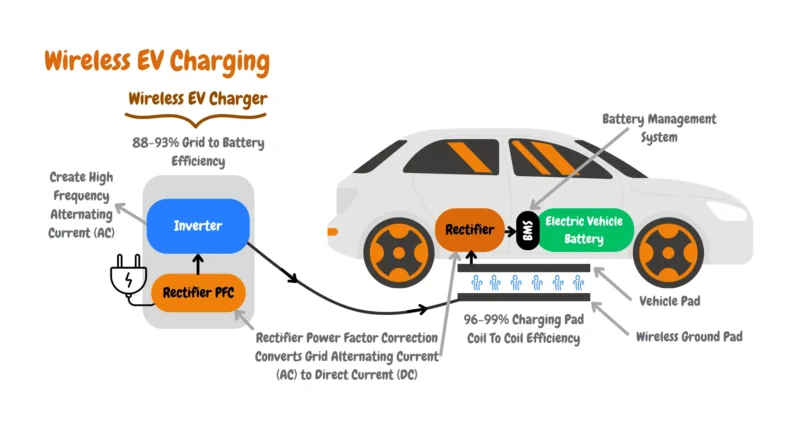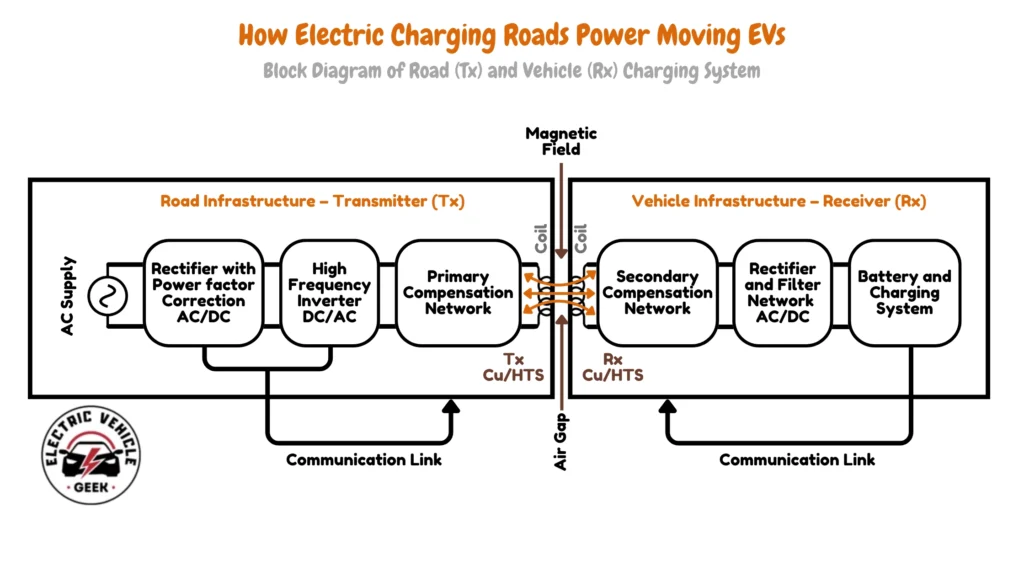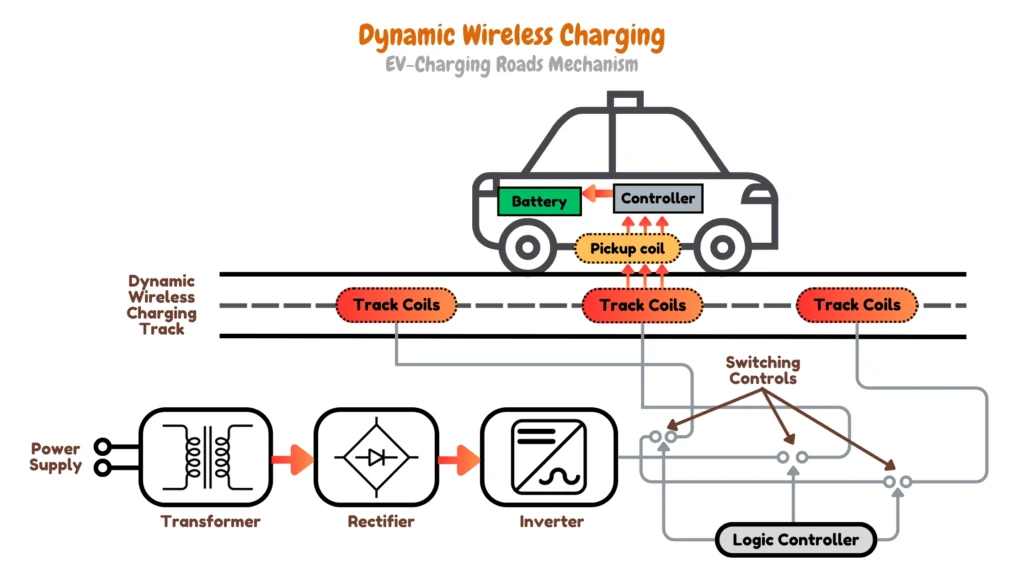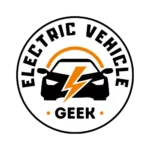Wireless EV Charging technology involves the transfer of electric energy from a source, which can be the electrical grid or renewable energy sources, to a load without any wired connection, mainly an EV charging cable.
There is so much interest in Wireless EV charging due to its application advantages compared to their wired counterparts, such as connection, corrosion, and mechanical problems due to exposed or damaged EV charging cables, other application advantages of using wireless EV charging include ease of use and low risk of safety hazards especially when charging your EV outdoors.
Demand for EV Charging.
While wireless EV charging has gained traction in Europe and Asia, the U.S. market is still catching up. WiTricity’s surveys indicate high interest among U.S. EV owners, with 81% expressing enthusiasm for wireless charging. Major automakers, including General Motors, are exploring licensing agreements with WiTricity, suggesting a shift toward wireless charging in the American EV market.
How Does Wireless EV Charging Work?
Electric vehicle (EV) charging operates through a process known as wireless power transfer (WPT), which relies on inductive coupling between transmitter and receiver coils.

In wireless EV charging, transmitter coils are embedded in an electric vehicle charging road, while receiver coils are installed in the vehicle. This system uses resonant inductive coupling, a method specifically chosen for medium- to high-power transfer applications, such as EV charging, due to its superior efficiency.

This resonant technology enables seamless and efficient power transfer between the embedded infrastructure and the vehicle, enhancing the overall effectiveness of wireless charging.
Dynamic Wireless EV Charging (EV-Charging Roads)
Dynamic wireless EV charging, also known as in-motion charging, allows electric vehicles to recharge while driving. This innovative system integrates transmitter coils into the road surface, which transfer power wirelessly to receiver coils installed in the electric vehicle. As the electric vehicle moves over these embedded coils, energy is continuously transmitted to its battery, reducing the need for stationary charging stops and extending the driving range.
The diagram below illustrates the complex network of interconnected components in a dynamic EV-charging road system. It depicts how transmitter coils embedded within the road surface wirelessly transfer power to a moving electric vehicle, ensuring seamless energy transfer.

As you can see from the diagram above the system integrates key elements such as a transformer, rectifier, inverter, logic controller, and switching controls, demonstrating their coordinated operation in enabling efficient, in-motion EV charging.
By enabling real-time charging on the move, dynamic charging has the potential to eliminate range anxiety, reduce battery size requirements, and enhance overall energy efficiency by minimizing downtime for charging. While still in the early stages of development, pilot programs worldwide are testing their feasibility for highways, public transit systems, and urban infrastructure.
WiTricity’s Wireless EV Charging System
One of the leading companies in wireless EV charging, WiTricity’s wireless charging system operates in the principle of magnetic resonance, enabling energy transfer between the EV wireless charging pad placed on the ground and the receiver placed in the EV through a magnetic field.
WiTricity’s wireless charging offers unparalleled convenience and reliability for home EV charging. Forget the hassle of plugging in – with wireless charging, you only need to park your electric vehicle (EV).
Wireless EV Charging at Home.
Operating at the efficiency and speed of a Level 2 EV Charger, wireless charging elevates the experience of owning an EV. The charging pad can be seamlessly integrated into your garage floor or driveway, with advanced safety features ensuring peace of mind. A user-friendly mobile app allows for easy programming and tracking of charging, usage data, and more.
Commercial EV Wireless Charging.
Beyond home use, wireless charging extends its convenience to commercial buildings, including office buildings, shopping malls, and grocery stores. Whether parked for an extended 8-hour workday or just 5 minutes during errands, EVs can effortlessly charge by parking over the designated charging pad.
Wireless charging at commercial sites ensures hassle-free charging experiences by eliminating the need for charger plugs, concerns about unsafe locations, and potential charger malfunctions. Municipal and commercial parking lots also benefit from the safety of wireless charging, making it an attractive option for cold-weather EV adoption.
While wireless charging is on the horizon for consumers, commercial fleets are set to be the first to test this technology extensively. WiTricity plans to provide retrofitted Ford Mustang Mach-Es and E-Transit Vans for testing later this year. Additionally, exploring vehicle-to-grid wireless charging presents exciting possibilities, creating new opportunities for grid management and EV owners.
The Rise of Wireless EV Charging
The EV market is gearing toward the adoption of Wireless EV charging, The Society of Automotive Engineers (SAE) laid the foundation for Wireless EV charging by standardizing Wireless EV charging infrastructure for interoperability purposes through its SAE J2954, crafting a blueprint that delineates the parameters for seamless interaction, electromagnetic harmony, EMF considerations, optimal performance thresholds, safety benchmarks, and rigorous testing protocols, all tailored specifically to the wireless power transfer (WPT) of compact plug-in electric vehicles.
One of the leading companies that have made massive progress in EV wireless technology is WiTricity, a Massachusetts-based company whose intellectual property was licensed to Wiferon, a German wireless EV charging supplier, and was 2023 acquired by Tesla, on a recent YouTube video Tesla chief designer Franz von Holzhausen claimed the company was developing Wireless EV charging pads.
Other manufacturers such as BMW, Audi, and Jaguar have confirmed they are working on Wireless EV charging.
Wireless EV Charging Myths
Some Wireless EV Charging myths around the EV communities include the efficiency ratings of charging an EV using a charging pad and the safety issues surrounding wireless EV charging near pets and humans.
WiTricity, the leading company in Wireless EV charging, has confirmed that the efficiency of using a Wireless EV Charger is 90-93% compared to using your home EV Charger in the 88% to 95% efficiency range. regarding safety, the company has stated that the Wireless EV Charger normally operates at frequencies below the surrounding areas, ensuring the safety of humans and pets when around a charger while it’s charging.
Challenges of Wireless EV Charging
Wireless EV Charging has been slow since its public awareness in 2020; consumers are slow to adopt new technology mainly due to infrastructure development, including few electric vehicles supporting Wires EV Charging.
Other challenges facing Wireless EV charging adoption include the initial costs of purchasing wireless charging products; for example, the WiTricity Wireless EV charging system is priced at approximately $2,500, and factoring in installation expenses, the total setup would amount to around $4,000. This represents roughly twice the cost of installing a conventional Level 2 home charger.
Pros and Cons of Wireless EV Charging
Although there is advancement in the Wireless EV Charging market, with already existing Wireless EV Charging infrastructure available, some challenges and advantages are experienced, for wider adoption, more focus will be placed on improving the advantages highlighted below, and solving the issues highlighted below:
What Are the Advantages of Wireless EV Charging?
- Wireless EV charging has created room for continuous electric vehicle charging, which, if improved and implemented, can increase the range of electric vehicles, boosting their adoption.
- Dynamic EV charging solutions require fewer infrastructure elements than traditional plug-in EV chargers, saving space in your garage and at public EV charging stations.
- Dynamic charging also reduces the battery size required, which reduces the weight and cost of EV ownership considering the cost of an EV battery consists of 40% of the total EV ownership costs.
What Are the Disadvantages of Wireless EV Charging?
- Manufacturers are currently trying to figure out a space for placing a charging pad under the carriage of an Electric vehicle. This is the most exposed surface of a vehicle on the road, exposing the charging pad to elements that can damage it.
- More research is needed to improve the technology behind Wireless EV charging, especially on elements that would boost power levels and efficiency to compete with existing charging infrastructure.
- We are currently facing a challenge with the existing EV charging infrastructure; with the current EV power demand exceeding 50%, retrofitting new Wireless EV technology would be challenging and costly, affecting the adoption of Wireless EV charging technology.
Conclusion
Wireless EV charging represents a pivotal moment in the evolution of electric vehicles, promising a future where the hassle of cords and cables is replaced by seamless, efficient, and visually unobtrusive charging solutions.
As automakers, technology providers, and consumers join forces to embrace this transformative technology, the road ahead for wireless EV charging looks promising, offering a cleaner, more convenient, and innovative future for electric mobility.

James Ndungu is a certified EV charger installer with over five years of experience in EVSE selection, permitting, and installation. He holds advanced credentials, including certification from the Electric Vehicle Infrastructure Training Program (EVITP) and specialized training in EV charging equipment and installation, as well as diplomas in EV Technology and Engineering Fundamentals of EVs. Since 2021, James has tested dozens of EV chargers and accessories, sharing expert insights into the latest EV charging technologies.







